Pawscessories is reader-supported. When you buy via links on our site, we may earn an affiliate commission at no cost to you.
Learn more.
Dogs are like humans in many ways, one of which is their susceptibility to various health conditions. One such condition is when a dog’s balls turn red or pink. This can be alarming for pet owners but often is nothing to worry about. In this post, we’ll take a look at the possible reasons why this happens and what you can do about it.
Table of Contents
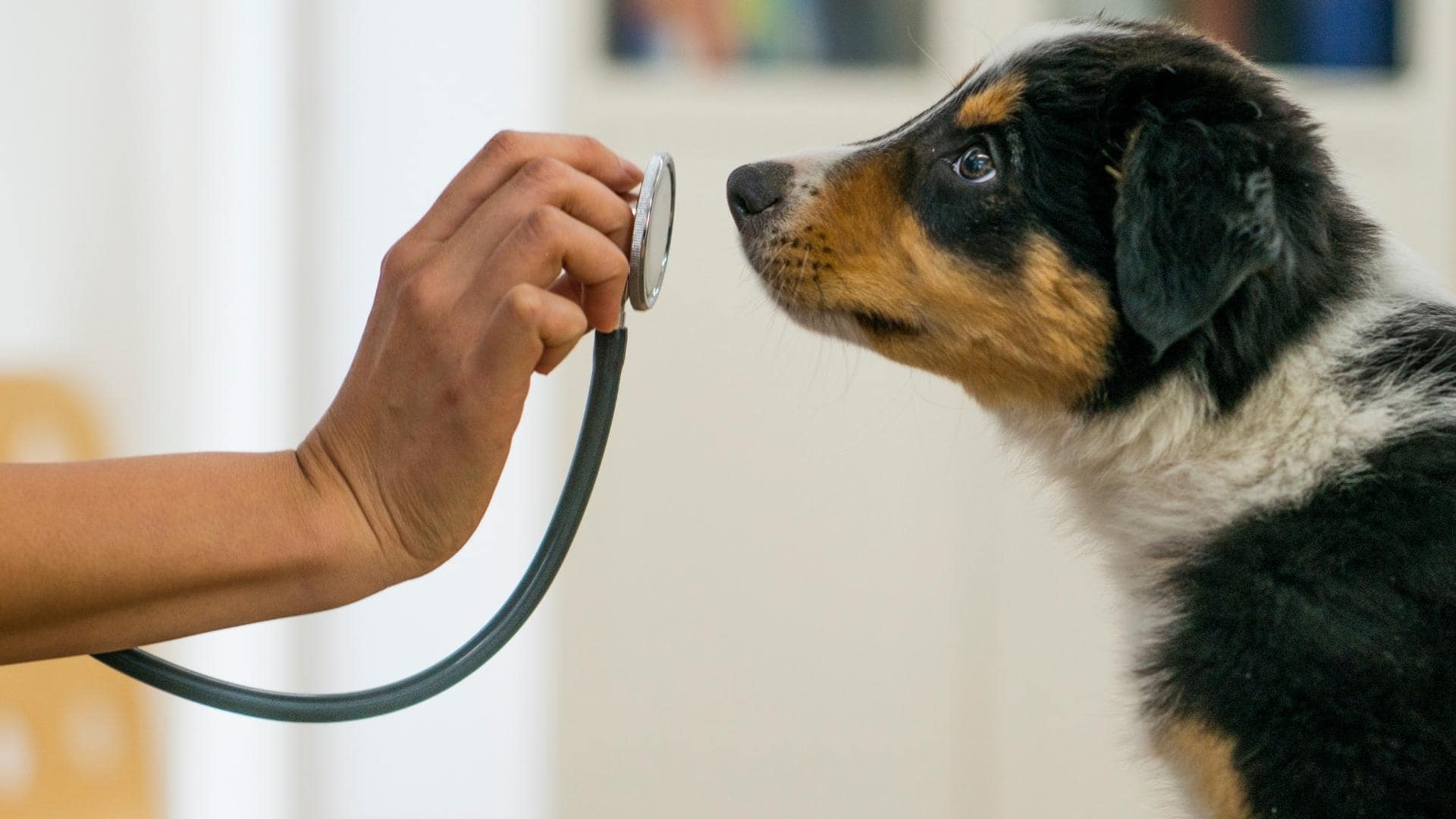
Why Are My Dog’s Balls Red And Swollen? 5 Possible Reasons
1) Over Grooming
If your dog is constantly licking or scratching their balls, this can cause irritation and lead to redness.
If you notice your dog over grooming, it’s important to take them to the vet to rule out any underlying health conditions. Additionally, you’ll want to keep an eye on their grooming habits and try to break the cycle by providing them with toys or chews to keep them occupied.
Treatment:
If the redness is due to over grooming, the vet will likely prescribe a topical ointment to help soothe the irritation. They may also recommend restricting your dog’s access to their private area (e.g., by using an Elizabethan collar) to prevent further irritation.
Prevention:
To help prevent your dog from over grooming, you should:
- Provide them with toys or chews to keep them occupied
- Groom them regularly
- Ensure there’s nothing in their environment causing them to feel anxious
At-Home Treatment:
If your vet has determined that the redness/swelling is not due to an underlying health condition, there are a few things you can do at home to help soothe your dog’s balls.
- Give them a soothing bath: Add oatmeal or a soothing dog shampoo to the bath to help relieve irritation.
- Apply a warm compress: This can help reduce swelling and pain.
- Make sure they’re getting enough exercise: Exercise can help reduce stress, which can in turn help reduce their desire to self-soothe by licking themselves.
- Give them anti-inflammatories: If your vet has approved, you can give your dog over-the-counter anti-inflammatories to help reduce swelling.
2) Orchitis
Orchitis is the inflammation of the testicles that can be caused by a number of things, including infections, trauma, and autoimmune diseases.
Symptoms of orchitis include:
- Swelling of the testicles
- Pain
- Redness
- Fever
- Lethargy
- Loss of appetite
Treatment:
Orchitis is a serious condition and requires treatment by a veterinarian. Treatment will depend on the underlying cause but may include antibiotics, pain relief medication, and/or surgery.
Prevention:
There is no guaranteed way to prevent orchitis, but you can help reduce your dog’s risk by:
- Keeping their vaccinations up to date
- Practicing good hygiene
- Avoiding rough play
At-Home Treatment:
If your dog has been diagnosed with orchitis, there is no at-home treatment. Instead, you will need to take them to the vet for treatment.
3) STD
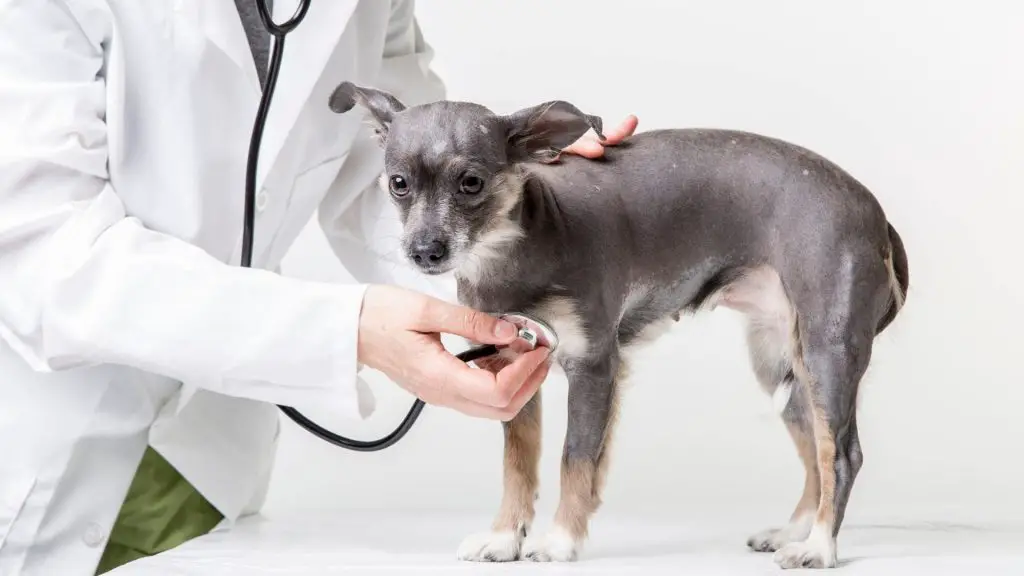
Yes, dogs can get STDs too. One of the most common STDs in dogs is called Brucellosis, which is a bacterial infection that can be passed to humans.
Symptoms of Brucellosis include:
- Swelling of the testicles
- Painful urination
- Lethargy
- Fever
- Loss of appetite
Treatment:
Brucellosis is a serious condition that requires treatment by a veterinarian. Treatment will usually involve antibiotics and may even require hospitalization.
Prevention:
There is no guaranteed way to prevent Brucellosis, but you can help reduce your dog’s risk by:
- Keeping their vaccinations up to date
- Practicing good hygiene
- Avoiding contact with other dogs that may be infected
At-Home Treatment:
Unfortunately, if your dog has been diagnosed with Brucellosis, there is no at-home treatment. You will need to take them to the vet for treatment.
4) Testicular Torsion
Testicular torsion is a condition in which the testicles rotate, causing the spermatic cord to twist. This can cut off blood flow to the testicles which is serious and requires medical attention.
Symptoms of testicular torsion include:
- Sudden onset of severe pain
- Swelling of the testicles
- Vomiting
- Lethargy
- Fever
Treatment:
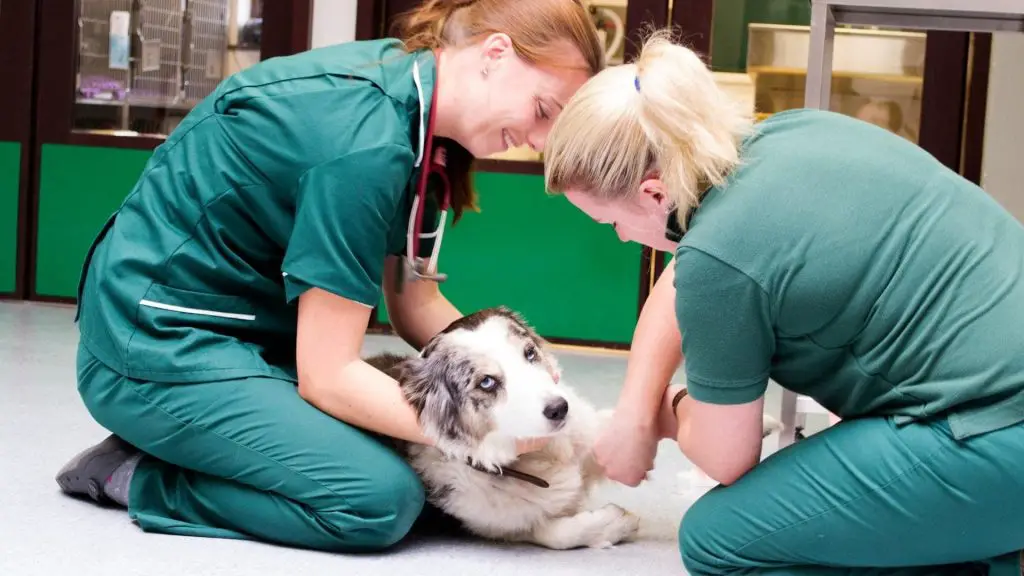
Testicular torsion is a medical emergency and requires treatment by a veterinarian. Treatment will usually involve surgery to untwist the spermatic cord.
Prevention:
There is no guaranteed way to prevent testicular torsion, but you can help reduce your dog’s risk by:
- Keeping an eye on their testicles for any signs of swelling or pain
- Taking them to the vet for regular check-ups
At-Home Treatment:
Unfortunately, there is no at-home treatment. If your dog has been diagnosed with testicular torsion, you will need to take them to the vet for treatment.
5) Tumor
Tumors of the testicles are not common but can occur. They can be benign or malignant.
Symptoms of a testicular tumor include:
- Swelling of the testicles
- Pain
- Redness
- Lump on the testicle
- Lethargy
- Fever
Treatment:
Testicle tumors are serious and require treatment by a veterinarian. Treatment will usually involve surgery to remove the tumor.
Prevention:
There is no guaranteed way to prevent testicular tumors, but you can help reduce your dog’s risk by:
- Keeping an eye on their testicles for any signs of swelling or pain
- Taking them to the vet for regular check-ups
At-Home Treatment:
If your dog has been diagnosed with a testicular tumor, there is no at-home treatment. You will need to take them to the vet for treatment.
Why Are My Dog’s Balls Red And Raw?
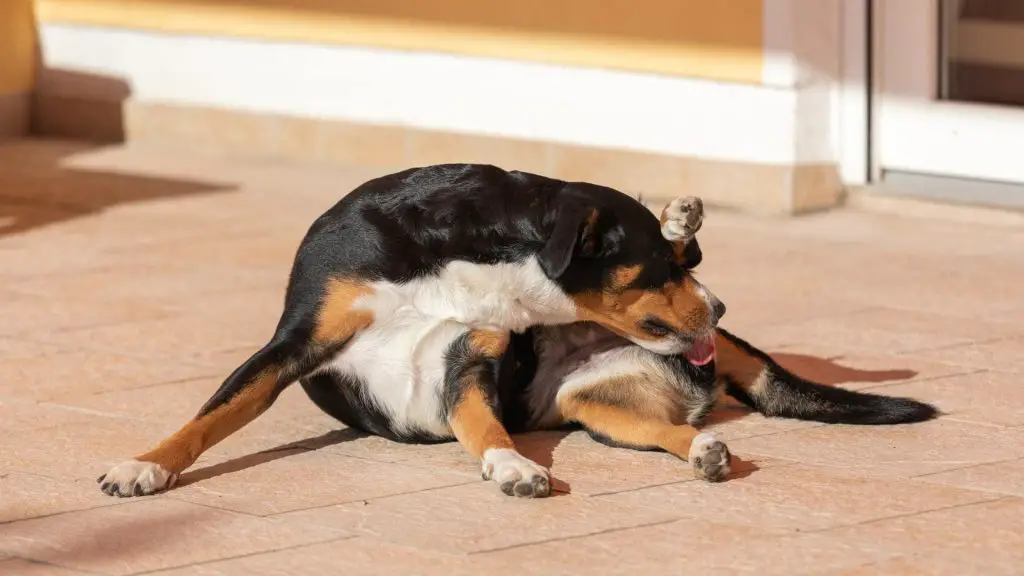
When a dog’s testicles are red and raw, it’s likely caused by them excessively licking them. Unfortunately, the reason why they’re licking them so much is a little more challenging to find out on your own. It could be allergies, an infection, trauma, or even something as serious as a tumor.
If you suspect your dog is licking their testicles excessively, take them to the vet so they can get checked out and determine the underlying cause. In the meantime, you can try to distract your dog with chew toys or other forms of entertainment, so they’re not focused on licking their testicles so often.
Why Are My Dog’s Balls Red And Dry?
Dogs can get dry skin for the same reasons that people do. It can come from too much exposure to dry air, skin irritation, or allergies can cause it.
If your dog has sensitive skin on their scrotum and is often dry, you can try applying coconut oil or aloe vera to their testicles to help alleviate the dryness. Many dog shampoos have these types of skin soothing ingredients and may be worth buying for their bathtime if dry skin is a common problem for them.
When it comes to allergies, the best thing you can do is try to identify what they’re allergic to and remove it from their environment. For example, if your dog is allergic to something in their food, you may need to switch to a different type of food. Likewise, if they’re allergic to something in their environment, you’ll need to do your best to remove it or keep them away from it.
If you’re unsure what’s causing your dog’s dry, red testicles, the best thing to do is take them to the vet to get checked out. The vet will be able to determine the cause and help you find a solution.
Why Are My Dog’s Balls Red After Grooming?
If your dog’s testicles are red after grooming, it’s likely because they were shaved too close. This can cause irritation and even razor burn.
If you notice that your dog’s testicles are red after grooming, try to let the area air out as much as possible. You can also apply a light amount of coconut oil or aloe vera to help soothe the skin.
If the irritation is severe or doesn’t seem to be improving, take your dog to the vet so they can get checked out. The vet may prescribe a medicated cream to help soothe the skin.
To prevent this from happening in the future, be sure only to shave a small amount of hair at a time. If you’re not comfortable shaving your dog’s testicles yourself, you can always take them to a groomer who can do it for you.
Why Are My Dog’s Balls Pink?
Whether a dog’s testicles appear red or pink, the causes are the same. The color difference is likely a pigment difference on their skin. It could also mean that their irritation is in earlier stages than if they were red.
If you notice that your dog’s testicles are pink, the best thing to do is take them to the vet so they can get checked out. The vet will be able to determine the cause and help you find a solution.
Are Some Dogs More Prone To Getting Red Balls?
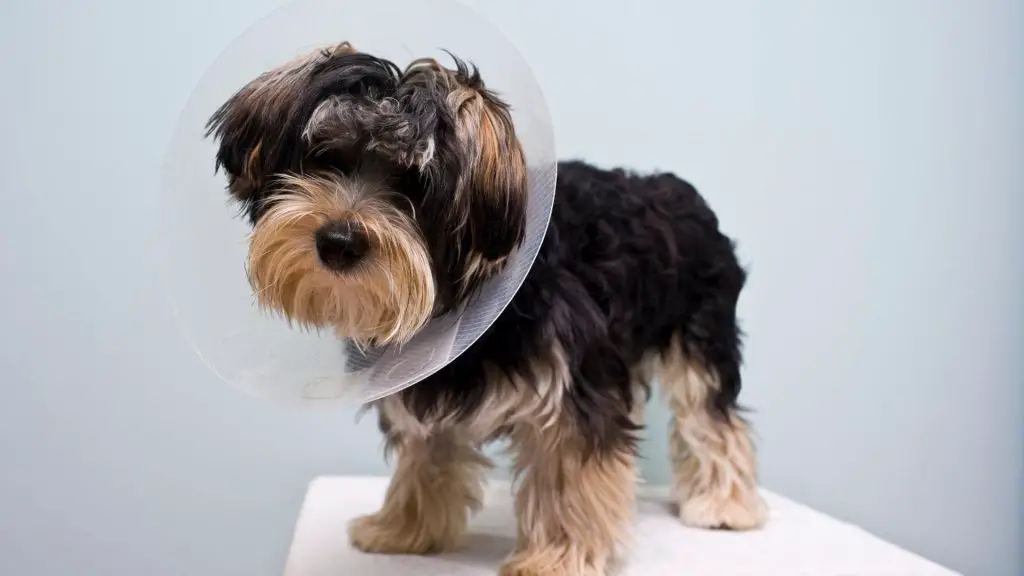
Yes, some dogs are more prone to getting red balls than others. Some breeds are more susceptible to allergic reactions, and others are more likely to have tumors based on their genetics.
Bulldogs in particular (French Bulldogs, English Bulldogs, American Bulldogs) are known for having more skin issues due to their wrinkly skin. If you happen to have one of these dogs, you’ll have to clean their skin folds and tail pocket more frequently to avoid them getting an infection or red, inflamed skin.
Tips To Help a Dog With Red Or Pink Balls
1) Help Alleviate Their Anxiety
If your dog licks their testicles excessively, it could be a sign of anxiety. Dogs will often lick their paws or other body parts when they’re feeling anxious or stressed.
To help alleviate your dog’s anxiety, you can try giving them a Kong toy filled with peanut butter or another type of treat. This will give them something to focus on other than what’s making them feel anxious.
You can also try calming supplements like CBD oils or treats to help reduce your dog’s anxiety levels. If you’re unsure what’s causing your dog’s anxiety, you can either speak with a professional dog trainer or vet to try and find the source of their stress.
Another option is to try a dog cone to stop them from licking so much. This can prevent further issues developing from excessive licking.
2) Increase Physical & Mental Stimulation
If your dog is bored, they may start licking their testicles far more than they should as a way to relieve boredom. To help increase physical and mental stimulation, you can try giving them more toys to play with, taking them on longer walks/runs, or teaching them new tricks/behaviors.
You can also try dog puzzle toys that will help engage their mind and give them something to do. These types of toys are often filled with treats or food that your dog has to figure out how to get out.
If you’re not sure what type of toys or activities are best for your dog, you can always speak with a professional dog trainer or behaviorist. They’ll be able to give you specific recommendations based on your dog’s individual needs.
If their licking is for no reason other than boredom, the more stimulation they have, the less likely they are to focus on licking their testicles excessively.
3) Have a Vet Take a Look
If your dog’s testicles are red or pink and you don’t think it’s simply because they’re over grooming themselves, it’s always best to have a vet take a look. They’ll be able to determine if there’s an infection or another underlying health issue that needs to be addressed.
Pink or red testicles can also be a sign of something serious like testicular cancer, so it’s important to them looked at them as soon as possible if you notice this color change.
The vet will likely do a physical examination and may also need to run some tests (blood work, urinalysis, etc.) to get a better idea of what’s going on.
After they’ve done a thorough examination, they’ll be able to give you a diagnosis and discuss treatment options with you.
In most cases, the vet will prescribe antibiotics if there’s an infection present. However, if the cause is something more serious like cancer, they’ll likely refer you to a specialist for further treatment.
Final Thoughts
If you’ve noticed that your dog’s testicles are red or pink, it’s important to take them to the vet to get checked out. In most cases, it’s nothing to worry about and can be easily resolved with some simple home treatment.
However, in some cases, it could indicate a more severe health issue like cancer. So, it’s always best to err on the side of caution and have your dog seen by a professional to rule out any potential problems.
Other posts you might find interesting:
Why Is My Dog’s Occiput Getting Bigger? (Simply Explained)
